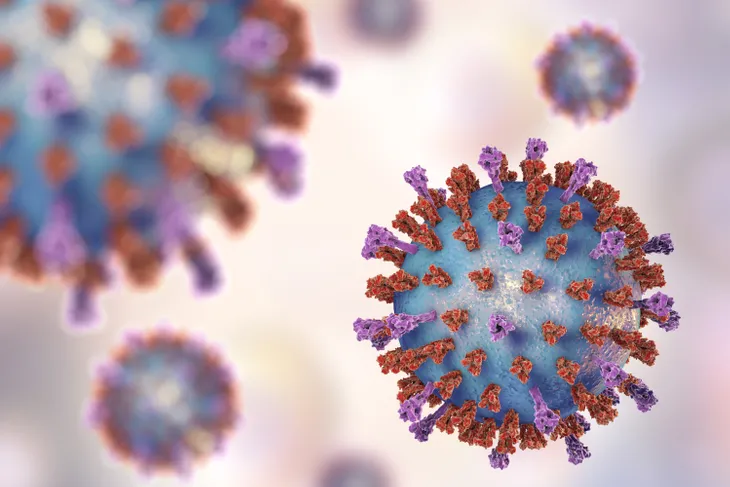- Strep throat is a bacterial infection caused by Group A Streptococcus.
- Symptoms of strep throat may include fever, difficulty swallowing, and white patches on the throat.
- Unlike sore throats caused by viruses, strep throat should be treated with antibiotics to fight the bacteria.
It’s not unusual to get a sore throat when cold and flu season strikes, but if your throat feels particularly painful, you might consider whether you’ve got strep throat. A sore throat caused by group A strep bacteria requires a different treatment than one caused by a virus.
Below, we’ll look more closely at the causes and symptoms of strep throat, the best course of treatment, and tips on preventing the illness from spreading.
What Is Strep Throat?
Strep throat is an infection caused by a highly contagious bacteria called Group A Streptococcus, or group A strep. It causes inflammation of the throat and tonsils and may include the following symptoms:
- Painful, burning sensation in the throat
- White patches on the throat and tonsils
- Red spots on the inside upper mouth
- Soreness when swallowing
- Enlarged neck glands or tonsils
- Fever above 101 degrees Fahrenheit
- Chills
- Headache
- Nausea
- Rash
Strep throat symptoms usually appear within 5-days of exposure to group A strep, but some people can be infected and not show signs.
Is Your Sore Throat Caused by a Virus or Bacteria?
Sore throats are common, especially in the fall and winter. Most of the time, however, they’re caused by viruses and not group A strep bacteria.
You probably have a viral infection, such as a cold, if your sore throat is accompanied by a cough, congestion, runny nose, or diarrhea. The sore throat usually develops gradually. By comparison, coughs aren’t common with strep throat, and any soreness tends to come on suddenly.
It’s important to determine if it’s a virus or bacteria causing your sore throat to prevent the unnecessary use of antibiotics. Sore throats caused by viral infections usually clear up on their own and shouldn’t be treated with antibiotics.
How Strep Throat Spreads
Group A strep bacteria can be found in the throat, nose, saliva, and mucus of infected individuals. It’s easily transmitted, as it becomes airborne when the person sneezes, coughs, or even talks.
You can catch strep throat when you breathe in tiny respiratory droplets containing group A strep. You might also touch a surface contaminated by the droplets and transfer the bacteria into your body when you touch your mouth, nose, or eyes. Strep throat can also be spread if you drink from the same glass or share dishes and utensils with an infected individual.
Who’s at Risk of Getting Strep?
Anyone can get strep throat, but it’s especially common among children and teens. According to the National Library of Medicine, strep affects 5- to 15-percent of adults and 20- to 30-percent of children with sore throats. It’s rare in children under 3-years of age.
School-aged children are often in close quarters, making it easy to breathe in droplets containing group A strep and for illness to spread. Children may also share items such as pencils and books or touch common surfaces such as doorknobs and desks. Adults who work in daycare centers or schools may also be at increased risk.
Strep throat can spread easily among family members or people who live together. Even if you’ve had strep before, you can get re-infected.
Diagnosing Strep Throat
Doctors usually begin with an examination to check for swollen lymph nodes and white patches on the throat that indicate strep. If they suspect strep throat, they can swab the throat to test for group A strep bacteria. A rapid antigen strep test can be performed right in the doctor’s office and only takes 15-minutes for the results. False negatives are possible with rapid tests, however.
Your physician can also take a throat culture that’s sent to a lab for analysis. This test is more accurate than a rapid test, but it takes about 48-hours for the lab to return the results.
Treating Strep Throat
If you or your child test positive for strep throat, your healthcare provider will likely prescribe a course of antibiotics. Antibiotics are usually prescribed for 10-days, although you might notice an improvement in symptoms in a few days.
Even if you’re feeling better, take the medication as prescribed by your doctor to prevent symptoms from recurring and ensure the bacteria is completely gone. It’s also a good idea to replace your toothbrush a few days after starting antibiotics, so you don’t reintroduce bacteria into your body.
Preventing Transmission of Strep Throat
Because strep throat is highly contagious, people who are infected should take precautions to avoid spreading the illness. The Centers for Disease Control and Prevention recommends staying home from work or school until you’ve taken antibiotics for a minimum of 12-hours and any fever has subsided.
You can also help reduce the risk of spreading strep throat by:
- Washing hands frequently with soap and water or using hand sanitizer if soap and water aren’t available.
- Limiting the spread of respiratory droplets by coughing or sneezing into tissues and discarding them in the garbage.
- Not sharing utensils, dishes, or personal items (such as toothbrushes).
- Sanitizing common surfaces that may be contaminated.
- Taking antibiotics as prescribed by your doctor.
How Long Are You Contagious?
Strep throat has an incubation period of up to 5-days from the time you’re exposed to group A strep and the time your symptoms appear. You’re contagious during this time and until you’ve been taking antibiotics for at least 12-hours. If you don’t take antibiotics, you can be contagious for up to 21-days, even if your symptoms resolve on their own sooner.
Some people can be infected by group A strep but not know it, as they don’t exhibit symptoms. These people are known as strep carriers and are less likely to transmit the disease.
 Ahmet Misirligul / Shutterstock
Ahmet Misirligul / ShutterstockScarlet Fever and Strep Throat
Some children who have strep throat can develop scarlet fever. This condition results in the appearance of a rough, red rash on the face, neck, chest, back, arms and legs. The rash itself isn’t contagious and usually lasts about a week.
Children with scarlet fever may also have a red, bumpy tongue that looks like it’s covered with a white coating. You might also see a reddish ring on the skin around the mouth. Similar to strep throat, scarlet fever is a bacterial infection that can be successfully treated with antibiotics.
Complications From Strep Throat
It’s a good idea to see a doctor as soon as you experience symptoms, as strep throat is usually easily diagnosed and managed. When untreated, however, the bacteria may spread and cause ear or sinus infections as well.
In rare cases, when antibiotics aren’t taken, complications can occur from an abnormal immune system response. These can result in:
- Rheumatic fever. Appearing 2- to 4-weeks after strep throat begins, this condition may cause pain and swelling of the joints, a rash, and over the long term, heart damage. Rheumatic fever can be treated with antibiotics.
- Kidney inflammation. Known as glomerulonephritis, this rare disorder can appear 1- to 2-weeks after a group A strep infection. It usually clears up within a few weeks or months.
How Necessary Are Antibiotics?
Strep throat can resolve on its own in 1- to 2-weeks without antibiotics. However, experts highly recommend antibiotics to treat the illness because it’s a bacterial infection. Antibiotics will help:
- Reduce the severity of your symptoms, so you feel better more quickly
- Reduce the risk of complications
- Significantly shorten the time you’re contagious to reduce the risk of spreading the illness
If you don’t see an improvement in your symptoms after 48-hours of starting antibiotics, consult your doctor.
Relieving Symptoms of Strep Throat at Home
Strep throat can be painful, but there are a few at-home remedies that may ease the discomfort while you’re recovering.
- Gargle salt water. Salt has antibacterial properties. Dissolve a half-teaspoon of salt in a cup of warm water and gargle a few times a day to help relieve inflammation.
- Keep your throat moist. Dry throats are easily irritated, so try increasing saliva flow by sucking on throat lozenges or hard candies. Ice pops or ice chips may also soothe the throat.
- Use a humidifier or vaporizer at night. Adding moisture to the air while you’re sleeping can prevent the throat from drying out.
- Take a pain reliever. An over-the-counter option may help with pain and fever.














